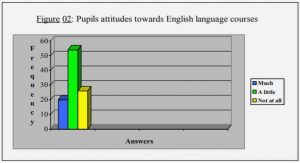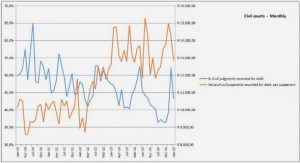Get Complete Project Material File(s) Now! »
Summer school on innovation and technological design 2015
An opportunity to explore the capabilities of data mining and exploration in the context of idea generation was implemented during the 2015 ETS International Summer School on innovation and technological design. The challenges were initially presented in the innovation contest “Les 24 heures de l’innovation”, and were then retaken by the Summer school participants. The researcher used a data mining tool (not TKM’s IPMetrix) to provide students with access to data related to their projects. In this preliminary case, 21 students worked on three challenges, one related to solving a parking issue, a second on the development of an automated garbage collection vehicle, and a third one on the automation of a warehouse with robots. Two efforts were made in using data mining tools to support the engineering design process of teams, as they had the mandate to develop a prototype. For the first attempt, the researched utilized the software tool from a company based in Montreal, which required manual tagging of patents to identify relevant information. It also did not have automatic document import directly from patent database providers, thus the researcher had to download patents one by one, a time-consuming process. The second attempt was the use of data from social media. Another local company from Montreal that specializes in the analysis of social media posts offered to make an extraction of publications related to the issues being tackled. Each team received a report to be analyzed by themselves. The first tool proved too inefficient for the researcher to upload large amounts of documents and perform the manual tagging, and complicated for participants to explore the data. With the second tool, the data was only useful to support their arguments in presenting their solutions. A second issue, unrelated to the data, was the ownership of the problems being solved. The students in this case had clients who dictated the expected outcome, and were bound by those constraints. For the subsequent cases, several desirable conditions were defined:
• Access to a data mining tool with more upload capabilities
• Access to a data mining tool with better ease of use for final users
• Open problems with no external clients
Idea generation sessions Idea generation is the fundamental step of the innovation process and, more importantly, it “is central to engineering design” (Glier et al. 2011). Participants from different domains or areas of expertise can work together during idea generation (ideation) sessions, to exchange and create knowledge, usually for a specific aim. The purpose of ideation sessions is to set an environment and implement creativity techniques that will help participants produce, express and combine ideas. Another advantage of idea generation sessions is that the ideas of others sometimes trigger the creation of related or new ideas (Munemori, Yoshino & Yunokuchi 2001). Ideation sessions are an interesting example to explore creativity support systems because of their unique characteristics: a defined purpose, limited time, multidisciplinary teams and willingness to create knowledge (Jiménez-Narvaez, Desrosiers & Gardoni, 2011). While there is not one generally agreed process for idea generation sessions, Shneiderman et al. (2006) propose the following phases, found in recent literature and commonly accepted for new product development cycles (Figure 2.1) There are many areas of opportunity to improve for the process of idea generation: sharing more ideas, providing feedback and decreasing the time it takes for the team to develop ideas into concepts. Based on the process for idea generation sessions by Shneiderman et al. (2006) and the examples found on extant literature, we categorized the use of information and identified how big data analytics can be used tool to help teams. It can be used in four phases of the process: to identify areas of opportunity (need identification), as input for inspiration (information gathering), to identify unrelated ideas to combine in new concepts, and to obtain insight from a large amount of ideas from a crowdsourcing effort (evaluation). For this work, the focus lays on the first stages, highlighted in Figure 2.1.
IMPROVING CONCEPT DEVELOPMENT WITH DATA EXPLORATION IN THE CONTEXT OF AN INNOVATION AND TECHNOLOGICAL DESIGN COURSE
The job of engineers is to solve complex problems and design new solutions or products which are usually constrained by the possibilities of available materials, budgets, and time. They attempt to foresee market needs, while also following new technologies in other fields which can impact their own industry. A common challenge for teams responsible of creating new products, services and solutions trying to solve problems when it comes to innovation is to see beyond existing solutions (Agogué et al., 2014), based on their own knowledge and the knowledge that exists within the company (Dodgson, Gann & Salter, 2006). As a wealth of information is generated everyday by companies, users, organizations, and increasingly machines (Dove & Jones, 2014), it becomes more difficult to keep up to date and process all this information within a company. By integrating the use of new data mining technologies, which make it possible to process and visualize data more efficiently, teams would be able to tap into the knowledge from their domain, and adjacent domains to find hints for new solutions (Dubitzky et al., 2012) through interactive exploration of data. Data mining technologies allow for a more efficient analysis of massive amounts of data, and quick visualization for exploration and interpretation. The most significant benefit from these technologies is the ability to obtain weak signals, or newly developing trends, to be explored. It also enables teams to quickly get an overview of what is happening in a domain, through which they can identify potential new connections to be explored and maybe materialize into a new solution (Dubitzky et al., 2012).
As noted by Siau (2000), there is a delicate balance of domain knowledge needed in order to be able to identify novel combinations. If the participants possess too little domain knowledge related to the problem or situation, it will be very challenging to perceive the potential links; however, participants with too much domain knowledge can be fixated to “correct” answers and not be open to new possibilities. Undergraduate and graduate students who are almost at the end of their studies have sufficient domain knowledge to understand the field, and because they have not been embedded in the ambient too long, are usually not yet entirely fixated on “correct” answers (Burkus, 2013). In the world of academia, researchers and students increase knowledge by building upon the work of others, expanding theories by proving or disproving what has been hypothesized before. However, there is a trend towards interdisciplinary collaboration and the combination of domains, which leads to finding unexpected solutions. Industry lines are also blurring, the amalgamation of knowledge areas (mechanical engineering + electronic engineering = mechatronics, biology + medicine + engineering = biomedical engineering, etc.) result in innovations for the market.
Universities are increasingly creating programs that enable students to take part in projects across field boundaries, providing an opportunity to study how these groups identify research projects that will include the skills and knowledge that each individual can bring with their background. In this paper, we present a case study where eight teams of students from different engineering fields search for innovative solutions linked to water access and conservation in the context of an intensive multidisciplinary summer course on innovation and technological design. This study aims to understand the use of data mining software to exploit data from patents as input for technological design, where the data mining tool allows for an exploration of the current solution space to find hints for novel solutions. It is posited that teams taking advantage of the data mining technology to evaluate current solutions and finding incumbent technologies and materials will be able to produce solutions which are deemed more innovative by a panel of experts. It is also expected that the level of sophistication of solutions will be increased, compared to teams not using the tool for exploration of the solution space.
Table of contents :
INTRODUCTION
CHAPTER 1 CONCEPTUAL FRAMEWORK & METHODOLOGY
1.1 Theoretical background
1.1.1 Engineering design process
1.1.2 Idea generation
1.1.3 Bisociation
1.1.4 Innovation contests
1.1.5 Data mining tools and techniques
1.1.6 Knowledge discovery from databases
1.1.7 Use of data mining for idea generation
1.2 Methodology
1.2.1 Design Science Research framework
1.2.2 Evaluation
1.2.3 Expected results
1.2.4 Stages
1.3 Exploratory studies
1.3.1 Outdoor lighting company
1.3.2 Summer school on innovation and technological design 2015
1.4 Design cycle evaluation
CHAPTER 2 BIG DATA ANALYTICS AS INPUT FOR PROBLEM DEFINITION AND IDEA GENERATION IN TECHNOLOGICAL DESIGN
Abstract
2.1 Introduction
2.2 Idea generation sessions
2.3 Big data analytics
2.3.1 Problem definition / need identification
2.3.2 Idea generation
2.4 Application in a higher education setting
2.4.1 Evaluation criteria
2.4.2 Problem definition / need identification
2.4.3 Information gathering
2.4.4 Idea generation
2.5 Discussion and conclusion
2.6 Design cycle evaluation
CHAPTER 3 IMPROVING CONCEPT DEVELOPMENT WITH DATA EXPLORATION IN THE CONTEXT OF AN INNOVATION AND TECHNOLOGICAL DESIGN COURSE
Abstract
3.1 Introduction
3.2 Background
3.2.1 Data mining for new concept development
3.2.2 Patent mining for creativity
3.3 Hypothesis
3.3.1 Evaluation of results
3.4 Case study
3.4.1 ETS Summer School
3.4.2 The activity journal
3.4.3 Team composition
3.5 Big data for creativity
3.6 Results
3.7 Discussion and conclusion
3.8 Future work
3.9 Design cycle evaluation
CHAPTER 4 PROMPTING INVENTIVE SOLUTION DESIGN WITH KEYWORD CUES FROM PATENT MINING IN AN INNOVATION COMPETITION
Abstract
4.1 Introduction
4.2 Background
4.3 Hypothesis
4.3.1 Procedure
4.3.2 Limitations
4.4 Case study
4.4.1 The 24 hours of innovation
4.4.2 Challenge selection
4.4.3 Data preparation
4.4.4 Analysis of team solutions
4.5 Results
4.6 Discussion and conclusion
4.7 Design cycle evaluation
CHAPTER 5 EFFECTS OF INFORMATION CUES FROM KNOWLEDGE DISCOVERY IN THE EARLY CREATIVE STAGES OF ENGINEERING DESIGN
Abstract
5.1 Introduction
5.2 Theoretical background
5.2.1 The knowledge discovery from databases (KDD) process
5.2.2 The engineering design process
5.2.3 Measuring the creative process
5.3 Study cases
5.3.1 Data selection
5.3.2 Data pre-processing, transformation and mining
5.3.3 Case 1 – Co-located teams, brief session for problem identification
5.3.4 Case 2 – Co-located teams, short project for concept development
5.3.5 Case 3 – Distributed teams, very short project for idea generation
5.4 Evaluation of results
5.5 Discussion
5.6 Design cycle evaluation
CHAPTER 6 DISCUSSION AND CONCLUSION
6.1 Summary of cases
6.2 Limitations of the research
6.3 Results
6.4 Discussion of results
6.5 Implications for the industry
6.6 Future work
6.6.1 Engineering design process
6.6.2 Use of machine learning and artificial intelligence
6.7 Conclusion
BIBLIOGRAPHICAL
REFERENCES





